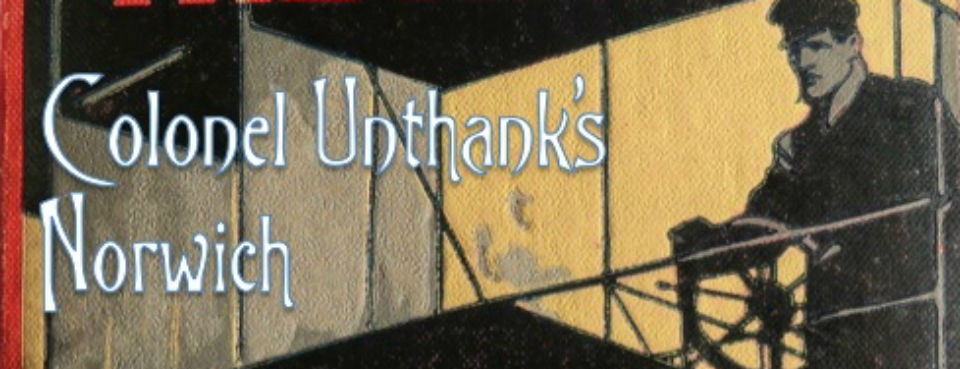Tags
Edward Valpy, George Borrow, James Stuart MP, Laurence Binyon, Southwell Road, The Colman family, Trafford Road Norwich, Waldeck Road
Valpy Avenue NR3
The founders of the Norwich Society of Artists, John Crome and Robert Ladbrooke, both sent sons to Norwich Grammar School (now Norwich School, in the Cathedral Close). Crome’s son, John Berney Crome, was a distinguished pupil; he was School Captain and, as a classicist, was selected to be the ‘Speech Boy’ to deliver a Latin oration to the Mayor of Norwich on Guild Day. Unfortunately, during a bitterly fought election, the school and the corporation found themselves on opposite sides and the Mayor never turned up to hear young Crome’s Latin composition. [1]
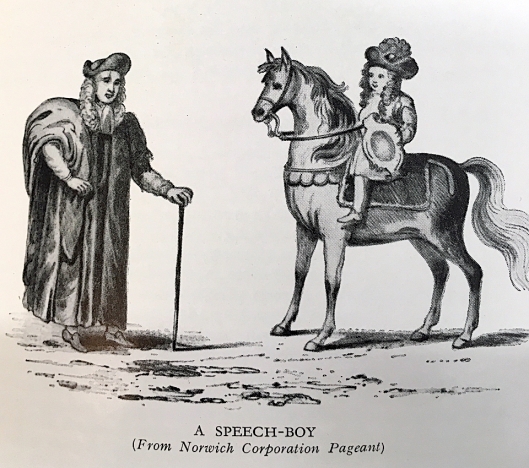
From [2]

In the absence of a portrait of Reverend Valpy, an Italian fox. Courtesy The Telegraph
George Borrow Road NR4
The novelist and traveller George Borrow (1803-1881) was also a student at Norwich Grammar School during Valpy’s headship. As a sixteen-year-old he would go to the Romani encampment on Mousehold Heath, visit fairs and Tombland Market with them and he even learned the Romani language. In recognition of his linguistic skills the gypsies called him Lav-engro, or Word Master. They also called him Cooro-mengro for his pugilistic skills learned from a fighter, John Thurtell, who was hanged for murder [4].
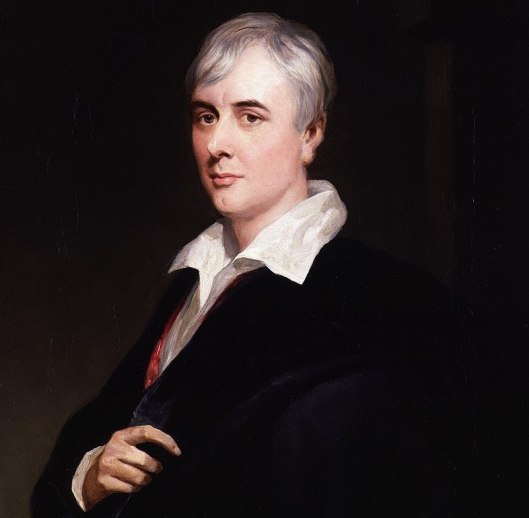
Portrait of George Borrow, 1843, by Henry Wyndham Phillips. Courtesy, National Portrait Gallery.
Perhaps as a result of his disaffection with school and immersion in Romani life, Borrow is said to have stained his face to darken it, prompting Reverend Valpy to ask, “Is that jaundice or only dirt, Borrow?”[4]. George Borrow’s fame derived from novels based on his wide travels through Europe. Evidently, Borrow was not a star pupil (no prize orations for him) yet he went on to gain a working knowledge of 100 languages, including a passion for Welsh [5]. Despite his rackety life, Borrow’s name is included on a school memorial naming Valpy’s pupils who made good [3].
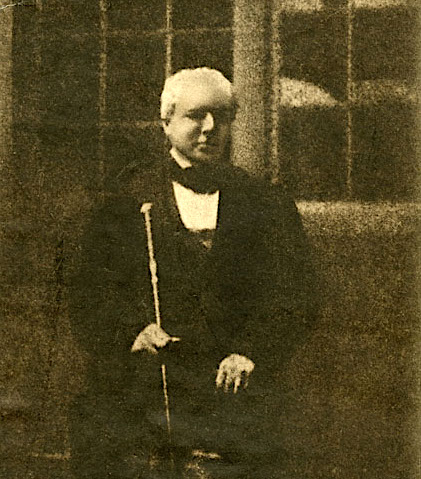
An early photographic portrait of George Borrow by Henry Pulley, Norwich 1848. Courtesy of Norfolk County Council at Picture Norfolk
Binyon Gardens NR8
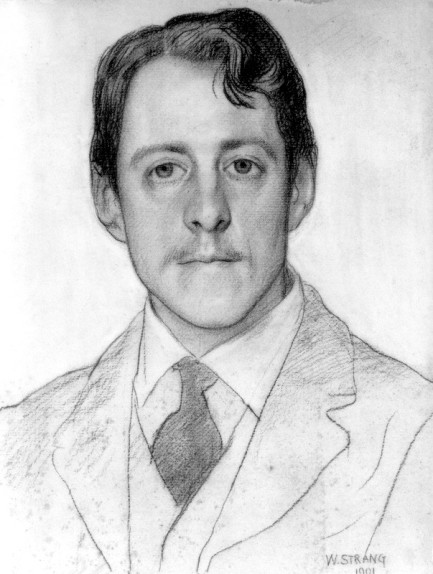
Laurence Binyon by William Strang 1901
Binyon is a surprising name to be found in the luminous company of Shakespeare, Byron, Keats and Dryden on a late C20 estate in the Norwich suburb of Taverham. Laurence Binyon (1869-1943) wrote a poem about The Blitz during WWII, The Burning of the Leaves, but it is for the war (or, rather, peace) poem he wrote in World War I that he is best known: he wrote For the Fallen in response to the high number of casualties already apparent in 1914 [6]. For the Fallen was one of three of Binyon’s poems on which Edward Elgar based his choral work, The Spirit of England. The fourth stanza is read on Remembrance Sunday:
They shall grow not old, as we that are left grow old,
Age shall not weary them, nor the years condemn.
At the going down of the sun and in the morning
We will remember them.
But we previously came across Binyon – then unnamed – in September’s post on the Norwich School of Painters when he was cited as the Keeper of Prints at the British Museum who thought John Sell Cotman’s Yorkshire paintings, ‘the most perfect examples of pure watercolour ever made in Europe’ [7].
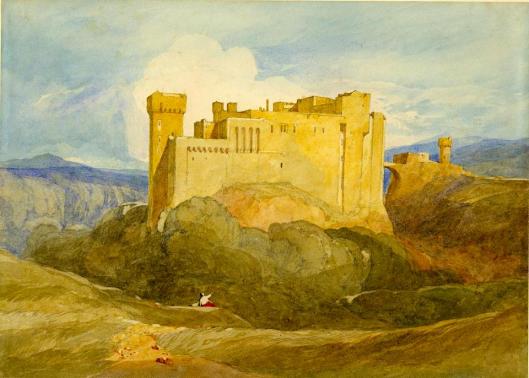
‘Castle in Yorkshire’ by John Sell Cotman. Norwich Castle Museum and Art Gallery NWHCM : 1951.235.138
Waldeck Road NR4
Unthank Road, like the rest of England, is divided in two: the city end, from Tesco Express to the ring road, and the posh end from the ring road down to Waitrose. Waldeck Road is off the second half, although it looks much like the terraces nearer the city. Robert Webb contacted me about the derivation of ‘Waldeck’ and between us we came up with an explanation. Pim Waldeck – a recent Dutch Ambassador to Great Britain, who visited Norwich – arrived a century too late to receive the accolade but the Germanic-sounding name does provide a clue. Princess Helena of Waldeck (a German principality) was married to Prince Leopold, Duke of Albany, the youngest son of Queen Victoria [8].
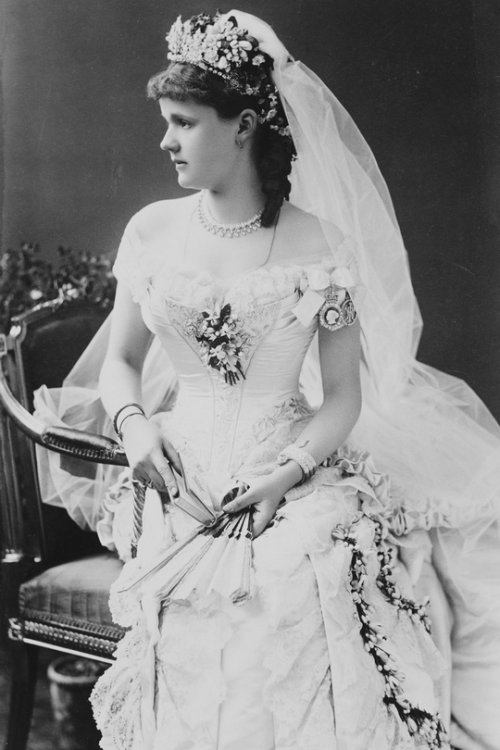
Princess Helena on her wedding day in 1882. Courtesy of Wikipedia
Leopold inherited his mother’s gene for haemophilia and died of a fall two years after his marriage, ensuring that ‘Waldeck’, ‘Leopold’ and ‘Albany’ would linger in the minds of those distributing patriotic street-names. However, an 1898 edition of the Norfolk Chronicle contains a record of a council meeting in which over-zealous street-naming had to be corrected.

Norfolk Chronicle 28-5-1898
It appears that the road originally named Avenue Road was changed to Waldeck Road because it clashed with Avenue Road off Park Lane. The names of Albany Road and Leopold Road also appear in this piece, clearly grouping the street names with Queen Victoria’s unfortunate son and his wife. Royalty provided a favourite riff for naming streets: another of Queen Victoria’s sons (Prince Arthur, Duke of Connaught who was stationed in Norwich with his regiment, the 7th Hussars) was commemorated in Connaught Road, off Dereham Road, next door to Helena Road named after his German sister-in-law.
An interesting postscript is that Harry Barnes, who developed most of Waldeck Road, lived in Brunswick Road [9] named after the German Duchy. Barnes applied to build his own house on Brunswick Road in 1906, not long before WWI when the Royal Family changed its own name from Saxe-Coburg Gotha to Windsor.
Trafford Road NR1 (and several others)
Next time The Canaries play Manchester United at Old Trafford, remember the connection with a Norwich street name, based on the estate developed by the Trafford family.
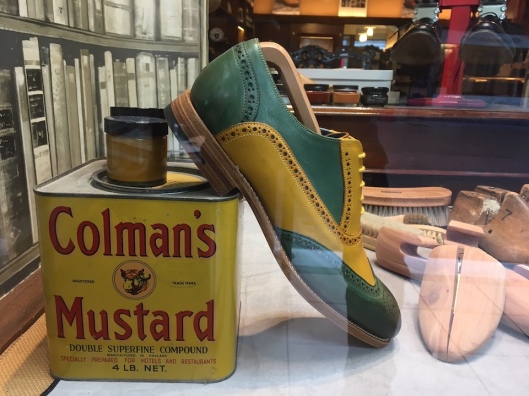
Spotted in the window of Bowhill & Elliott in London Street, Canary Yellow co-respondent shoes – a must for all Norwich City supporters (called The Canaries after the birds kept in the windows by immigrant Dutch weavers).
The Trafford family can be traced back to Anglo-Saxon landowners and are said to have taken their name from the village of Trafford, now part of Greater Manchester [10]. The great Norwich historian, Walter Rye [11], suggests that the real name of the family is Boehm after a male Boehm married a female Trafford in the C17. In the C18, however, the marriage of Sir Clement Boehm Trafford of Dunton Hall in Tydd St Mary, Lincolnshire and his wife Jane Southwell did not last and they separated in 1764. In 1790 Jane re-took the name of Southwell when she inherited from her brother Edward. Jane’s son Sigismund adopted the name of Trafford Southwell and it is he who bought the estate at Wroxham where the family still live. Sigismund died in 1827 and his splendid Gothic Revival mausoleum can be seen in the churchyard of St Mary’s Wroxham.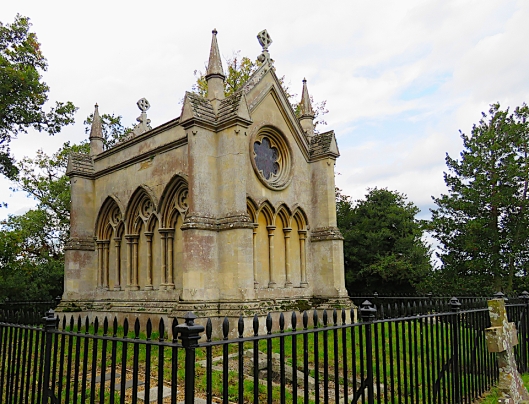
The Trafford Mausoleum, designed by Anthony Savin
The family lived in Wroxham Hall. It was erected in 1781 re-using stairs from the Great Tower at Caister Castle, built by Sir John Fastolf, the inspiration for Shakespeare’s Falstaff [11]. Wroxham Hall was demolished in the 1960s.
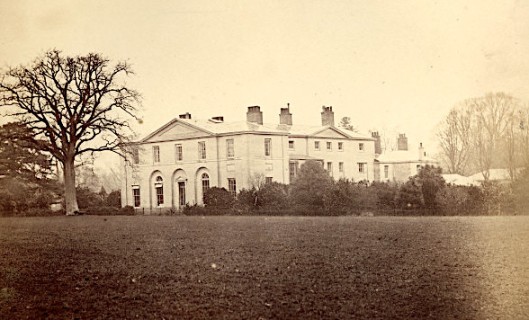
Wroxham House (not Hall) ca 1890. Courtesy Norfolk County Council at Picture Norfolk
The Trafford family owned land in the parish of Lakenham, to the east of Ipswich Road. In the mid-1890s the surveyor George Fitt drew up plans on behalf of Edward Southwell Trafford for laying out roads on the Trafford building estate. In 1919 his son, Major William Joseph Trafford, continued development by extending Trafford and Eleanor Roads.
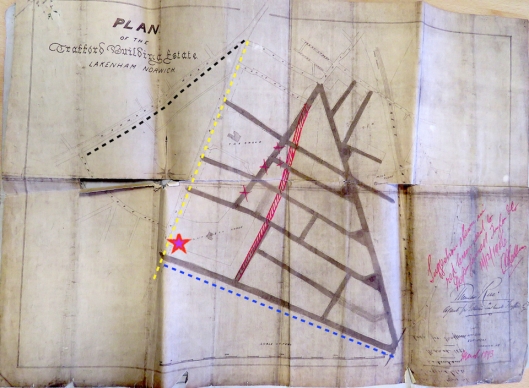
‘The Trafford Building Estate’ of Edward Southwell Trafford with the suggested road layout of 1893, updated (red) in 1906. Newmarket Rd (dotted black line); Ipswich Rd (dotted yellow); Cecil Rd (dotted blue). The star marks Southwell Lodge. Courtesy Norfolk Record Office N/EN/24/62
Edward Southwell Trafford and his wife the Honourable Eleanor Mary Petre had 12 children, one of whom was Cecil Edward Trafford; another was Sigismund who married Lady Elizabeth Constance Mary Bertie, known as Betty; another was Eleanor Mary Josephine Southwell Trafford. And there, in addition to Trafford Road, we have Southwell Road, Sigismund Road, Lady Betty Road and Cecil Road. As for the origin of Lady Mary Road, Mary was a common name in Catholic families like the Traffords, except there was no Lady Mary. Local historian Andrea Smith suggested to me that Lady Mary Road might have been named after the daughter of builder/developer, Albert Frost. Consistent with this, Frost did name streets off Trafford Road after his children (Brian, Patricia, Christopher, Josephine) .
A diversion around Southwell Lodge
On the map above, Southwell Lodge appears at the corner of Ipswich and Cecil Roads, now subsumed under City College.
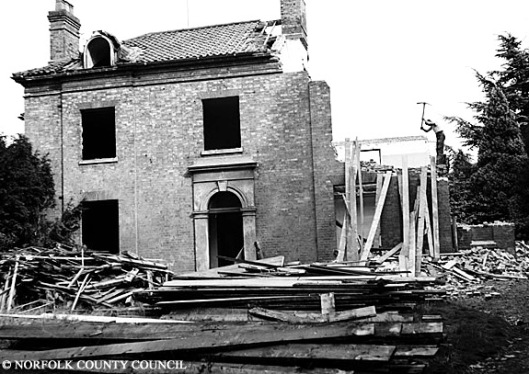
Demolition of Southwell Lodge (date unknown). This was to give way to City College’s Southwell Building, itself demolished in 1972 to make way for student accommodation, also known as Southwell Lodge. Photo George Swain, courtesy of Norfolk County Council at Picture Norfolk.
Southwell Lodge became the home of John Willis JP. In 1870 he married Mary Esther Colman whose brother was Jeremiah James Colman, manufacturer of English mustard, philanthropist and the man whose art collection forms the basis of the Norwich School galleries in the Castle Museum.
In the next generation the Colman women were active in campaigning for women to get the vote: in 1909 John Willis’ daughter Edith was Honorary Secretary of the Norwich Women’s Suffrage Society while her cousin Laura Elizabeth – JJ Colman’s eldest daughter – was President [12]. And as Mayor of Norwich, JJ Colman’s second daughter, Ethel Mary, became the first woman to hold such a post in this country.

Edith Willis of Southwell Lodge. Courtesy of Norfolk County Council
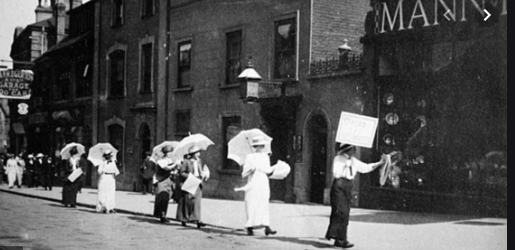
Campaigners for female emancipation on Prince of Wales Road
Stuart Road NR1
The Colmans were an influential family whose presence is still strong around the city (despite the recent closure of their mustard factory, Carrow Works). Laura Colman married James Stuart (1843-1913) whose name is commemorated in a row of workers’ cottages a few hundred yards from Carrow Works.

Between Carrow Hill (green) and King Street (blue) lie the cul-de-sacs, Stuart Road (underlined in red) and Alan Road (purple). Colman’s Carrow Works are starred. OS map of Norwich 1905/1907. Courtesy National Library of Scotland
Stuart was the first Professor of Mechanism and Applied Mechanics (now Engineering) at Cambridge. His support of extension courses for adults, especially women, did not find favour with the university and he left to become Liberal MP for Hackney and then Hoxton in London. But when his father-in-law died in 1898 Stuart became a director of Colman’s. Like JJ Colman, Stuart was an enlightened employer; in addition to adult education he supported female suffrage and established a pension scheme for Colman’s employees.

James Stuart MP drawn by Harold Wright for Vanity Fair 1899
James Stuart and Laura Colman married at the Princes’ Street Congregational Chapel designed by one of its deacons, the Norwich architect Edward Boardman. It was in this Nonconformist chapel that Boardman’s son, Edward Thomas Boardman (also an architect) was to marry Laura’s sister, Florence Esther Colman [14].
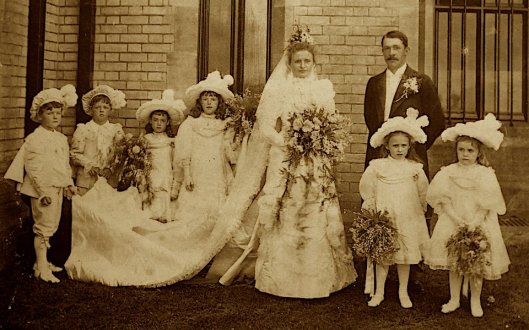
The marriage of Edward Thomas Boardman to Florence Esther Colman in 1898. Courtesy of ludhamarchive.org.uk
The Colman family burial plot is in The Rosary, the country’s first non-denominational cemetery [15]. In 1915, the Colman family commissioned Boardman and Son architects to design the Stuart Court apartments on Recorder Road in remembrance of Stuart. James Stuart had been concerned about the quality of housing for the elderly and this, according to Pevsner and Wilson [16], explains the almshouse feel of the apartments. They thought the Dutch-style gables slightly outdated but although late in terms of Arts & Crafts style (e.g., the ‘Pont Street Dutch’ of the 1880s) these features are entirely consistent with the Dutch gables brought to this city from the C16 onwards by religious refugees from the Low Countries [17]. See examples in nearby Cathedral Close.
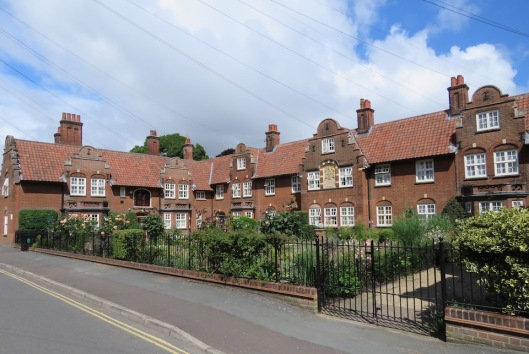
Stuart Court almshouses in Recorder Road. They were built around reinforced concrete, one of the first such examples in the city.
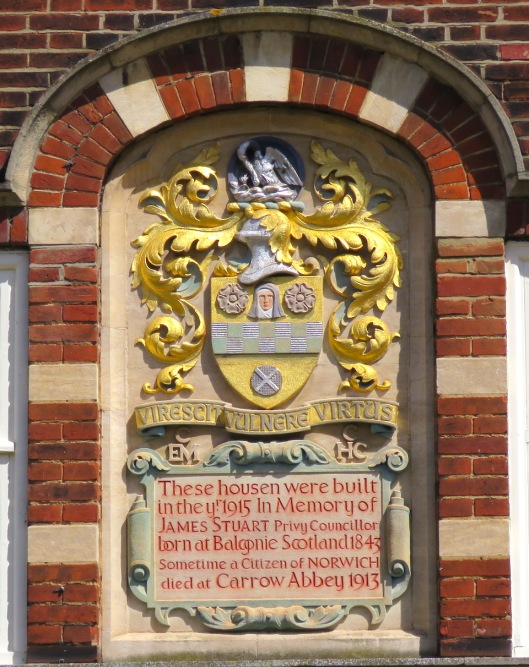
The initials EMC and HCC recognise Ethel Mary and Helen Caroline Colman’s initiative in this project

Opening of the James Stuart Garden (1922) on Recorder Road was delayed by the Great War
Alan Road NR1
JJ Colman’s wife Caroline was born a Cozens-Hardy and she passed these names on to their son Alan. Sadly, Alan Cozens-Hardy Colman (1867-1897) was to die young on a Nile boat near Luxor while convalescing from TB. Eight years on, Ethel and Helen Colman arranged for Daniel Hall of Reedham, on the Norfolk Broads, to build the pleasure wherry ‘Hathor’ in memory of the boat on which their brother had died. It is still available for hire [18].
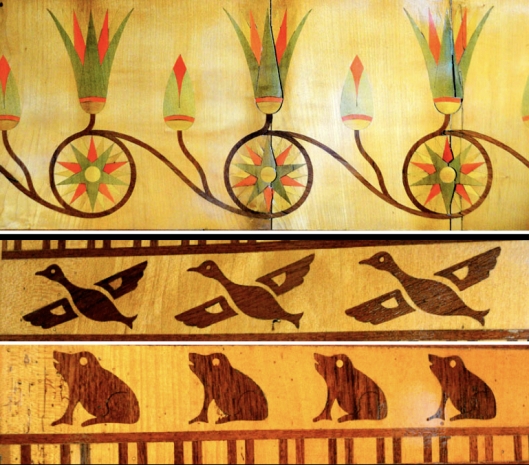
The interior of Hathor, decorated in an Egyptian style designed by ET Boardman. ©2018 http://www.broadsnet.co.uk. Courtesy of Peter Cox.
© 2019 Reggie Unthank
Sources
- William Frederick Dickes (1905). The Norwich School of Painting; Being a Full Account of the Norwich Exhibitions, the Lives of the Painters, the Lists of their Respective Exhibits and Descriptions of the Pictures. Pub: Jarrold & Sons, London.
- Richard Harries, Paul Cattermole and Peter Mackintosh (1991). A History of Norwich School. Pub: Friends of Norwich School.
- HW Saunders (1932). A History of the Norwich Grammar School. Pub: Jarrold & Sons Ltd., Norwich.
- Edward Thomas (1912). George Borrow: the Man and his Books. From: http://www.gutenberg.org/files/18588/18588-h/18588-h.htm
- https://www.georgeborrowtrust.org.uk/Georgeborrow.php
- https://en.wikipedia.org/wiki/Laurence_Binyon
- https://colonelunthanksnorwich.com/2019/09/15/the-norwich-school-of-painters/
- https://en.wikipedia.org/wiki/Princess_Helena_of_Waldeck_and_Pyrmont
- Norfolk Record Office NROCAT N/EN 12/1/6223
- The Trafford Family in, EA Handbook (1808). Norfolk Millennium Library CTRA 048.
- http://www.heritage.norfolk.gov.uk/record-details?MNF8068-Site-and-remains-of-Wroxham-Hall&Index=7550&RecordCount=56881&SessionID=7f476775-83b1-42ed-acd3-903e5e32df18
- https://ww1norfolk.co.uk/wwi-women-of-norfolk/test-page/suffragettes-suffragists/
- https://en.wikipedia.org/wiki/James_Stuart_(scientist)
- James Stuart Reminiscences (1911). Privately printed by the Chiswick Press, London.
- https://colonelunthanksnorwich.com/2018/10/15/the-norwich-way-of-death/
- Nikolaus Pevsner and Bill Wilson (2002). The Buildings of England. Norfolk I: Norwich and the North-East. Pub: Yale University Press.
- https://colonelunthanksnorwich.com/2019/08/15/going-dutch-the-norwich-strangers/
- https://www.wherryyachtcharter.org/hathor.php
Thanks
I am grateful to Robert Webb for providing information on Waldeck Road. For permissions, I thank Clare Everitt of Picture Norfolk, Nigel Pope of the Ludham Community Archive Group and Peter Cox of Broadsnet. Andrea Smith, local historian, provided useful background to the street names on the Trafford estate. Paul Clarke provided information about John Berney Crome’s Latin oration.
